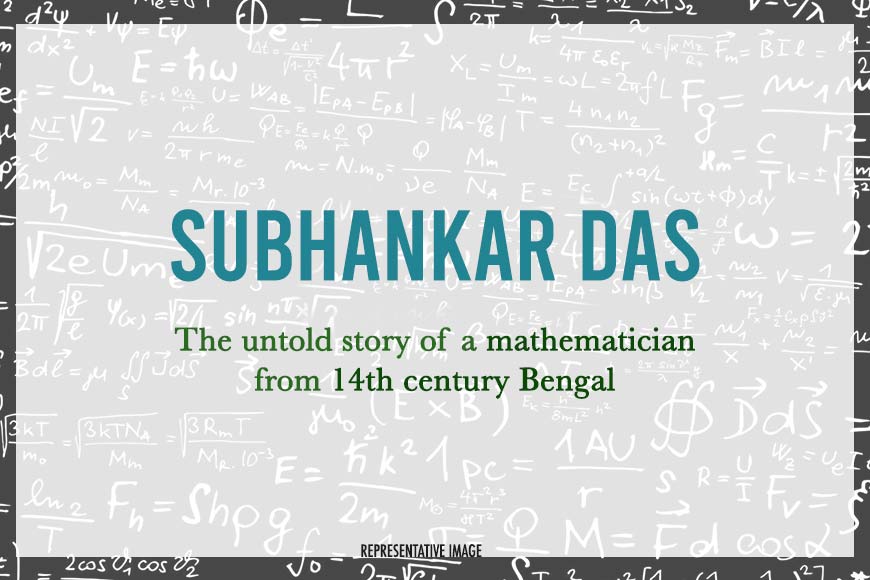Mathematician from 14th century Bengal, who was no less than human computer Shakuntala Devi

As India celebrates the genius of Shakuntala Devi and her mathematical brain as a human computer through a new launched movie, many have probably forgotten the name of Subhankar Das, the Bengali mathematician who used to crack difficult mathematical problems orally. He has realized the crux of the problem that most students face and in his inimitable way, found a ‘made easy’ solution for students to memorize different formulae required to solve arithmetic problems. This system devised by him to calculate difficult mathematical problems orally, was known as ‘Shubhankari.’ His system was in vogue and taught in schools in Bengal till the introduction of the metric system in the 1950s when the old system of calculation became redundant.
That was a time long ago before calculator and computer became the handmaids of mathematics. Subhankar Das was born in the beginning of 14th-century in Bankura, the kingdom of Raja Banku Roy. This was the time when the Pathans were attacking Bengal and the land was under severe drought. Amid this situation, Subhankar travelled extensively, meeting local zamindars with only one request: to stop their petty squabble and dig ponds for harvesting rainwater and utilizing underground water to save the farm produce. His ceaseless efforts finally fructified and a huge and deep dam was dug in Bankura and christened Subhankar Danra. ‘Bandh’ is an embankment where water is made to stand static or ‘Danra’. The barrage is functional to this day.
Subhankar Das was a renowned mathematician of his time and he wrote a large number of ‘made easy’ ‘Arya’ aka formulae for children that they could memorize and solve arithmetic problems easily. Famous linguist Dr Sukumar Sen explained, much before the beginning of the 16th century, riddles and short verses stating or explaining complex issues were known as ‘Arya’ and ‘Torja’ in Bengali. Subhankar had written ‘Chhotrish Karkhana’ -- a book on how the administration was conducted during the beginning of the 18th century when Bengal was ruled by the Nawabs. There are about two thousand or more shlokas in that book. Students would memorize these shlokas, known as ‘Shubhankari.’
 Here are a couple of Shubhankari ‘Arya’ or mathematical problems made easy by the system:
Here are a couple of Shubhankari ‘Arya’ or mathematical problems made easy by the system:
“Treesh hath brikkha ek chhilo uchcho sthane,/ Churaay uthibe ek keet koray monay,/ Diba bhage dosh haath uthite lagilo,/ Nisha joge ashto haath neechete namilo/ Na paaye jaabat chura kore say aton/ Kato diney uthechhilo karo nirupon”
(There was a 30-hand high tree on an elevated land and an insect decided to reach the top of that tree. Every morning it managed to climb 10-hand but as night descended, he slumped eight-hand downwards. But the insect had vowed to complete his journey. How many days did it take for him to reach the top?)
Here according to calculation, the insect climbed two hands if we take into account his ascend and descend rate. Towards the end of its journey it would be able to cover 10 hands during day time. So the rest of the climbing, that is, the remaining 20 hand of the height, was done in another 10 days.
Here’s another problem:
‘Sarobare bikashito kamal nikar/ Madhulobhe elo tatha onek bhromor,/ Proti padme boshi bhromor jugol/ Oliheen rahe tobey ekti komol/ Ekek bhromor boshe prottek kamole / Baki rohe ek oli, sankhya deho boli’
(Lotus flowers have bloomed in a pond. Seeing this, bees trooped in humming. If each pair of bee sits on each lotus but one lotus remains empty. But if one bee sits on each flower then one bee doesn’t get a flower to sit on. The question then is, how many bees were there and how many lotuses were there)?
If we try to solve this equation taking help from algebra, this is how we will find out:
Let us take the number of flowers as X and number of bees as Y
Y = 2 (X -1)…..1
Y= X +1……2
We solve (1) and (2) and get
X=3, Y= 4
So, the answer is, there were three lotuses in the pond and four bees.
Initially, Subhankar’s formulae were held in high esteem for devising an easy way to solve complex calculations. However, later they were interpreted in a negative light and seen as a quick-fix solution. The equations he formulated were known as ‘Manash-anka’ (mental maths) or the system to calculate mentally, without using paper and pen. Now his mathematical problems and solutions have been forgotten and even he is a forgotten name, erased from public memory. This great son of Bengal lives in old arithmetic books of yore and in the barrage in Bankura that carries his name.









